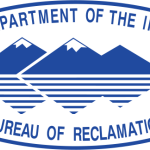- Industry: Government
- Number of terms: 15655
- Number of blossaries: 0
- Company Profile:
A U.S. Department of the Interior agency that oversees water resource management incuding the oversight and operation of numerous diversion, delivery, and storage projects the agency has built throughout the western United States for irrigation, water supply, and attendant hydroelectric power ...
Enacted in 1920, and amended in 1935, the Act consists of three parts. The first part incorporated the Federal Water Power Act administered by the former Federal Power Commission, whose activities were confined almost entirely to licensing non-Federal hydroelectric projects. Parts II and II were added with the passage of the Public Utility Act. These parts extended the Act's jurisdiction to include regulating the interstate transmission electrical energy and rates for its sale as wholesale in interstate commerce. The Federal Energy Regulatory Commission is now charged with the administration of this law. See Federal Power Act of 1920.
Industry:Engineering
An activity designed to promote emergency preparedness; evaluate emergency operations, policies, plans, procedures, and facilities; train personnel in emergency management and response duties; and demonstrate operational capability. Exercises consist of performing duties, tasks, or operations very similar to the way they would be performed in a real emergency. However, the exercise performance is in response to a simulated event.
Therefore, exercises require input to emergency personnel that motivates a realistic action. Reclamation "mock emergencies" have been replaced with the five components of an emergency exercise program as defined by the Federal Emergency Management Agency. These five components are: orientation seminar, tabletop exercise, drill, functional exercise, and full-scale exercise.
Industry:Engineering
The reservoir capacity normally usable for storage and regulation of reservoir inflows to meet established reservoir operating requirements. It extends from the highest of either the top of exclusive flood control capacity, the top of joint use capacity, or the top of active conservation capacity, to the top of inactive capacity. It is also the total capacity less the sum of the inactive and dead capacities. The reservoir capacity that can be used for irrigation, power, municipal and industrial use, fish and wildlife, recreation, water quality, and other purposes.
Industry:Engineering
The surface of underground, gravity-controlled water. The level of ground water. The boundary in the ground between where the ground is saturated with water (zone of saturation) and where the ground is filled with water and air (zone of aeration). The upper surface of the zone of saturation of ground water above an impermeable layer of soil or rock (through which water cannot move) as in an unconfined aquifer. This level can be very near the surface of the ground or far below it.
Industry:Engineering
Loss of water from a channel or pipe during conveyance, including losses due to seepage, leakage, evaporation and transpiration by plants growing in or near the channel. Water not available for further use.
Industry:Engineering
Reaction of alkalis with strained quartz is thought to be one reactive component of aggregates causing this reaction. A wide variety of quartz-bearing rocks have been found to be reactive including graywackes, argillites, quartzwackes, quartzarenites, quartzites, hornfels, quartz biotite, gneiss, granite, phyllite, arkose and sandstone. This type of reaction is characterized by a delayed onset of expansion and cracking may not become evident for up to 20 years after construction. See alkali-aggregate reaction.
Industry:Engineering
Mass of sediment passing through a stream cross section in a specified period of time, expressed in millions of tons (mt). Amount of sediment carried by running water. The sediment that is being moved by a stream.
Industry:Engineering
Reservoir volume above active conservation capacity and joint use capacity that is reserved for flood runoff and then evacuated as soon as possible to keep that volume in readiness for the next flood.
Industry:Engineering
A process which, having return flow and consumptive use elements, turns water from a given path. Removal of water from its natural channel for human use. Use of part of a stream flow as a water supply. Channel constructed across the slope for the purpose of intercepting surface runoff, changing the accustomed course of all or part of a stream. A structural conveyance (or ditch) constructed across a slope to intercept runoff flowing down a hillside, and divert it to some convenient discharge point.
Industry:Engineering
Line item used in an appraisal estimate for design changes and to estimate pay items that have little influence on the total cost. The allowance for unlisted items in appraisal estimates should be at least 10 percent of the listed items. Line item used in a feasibility estimate for quantity changes due to receiving more design data and to estimate pay items that have little influence on the total cost. The allowance for unlisted items in a feasibility estimate varies between 2 percent and 15 percent of the listed items, depending on the form of the specifications quantities.
Industry:Engineering
